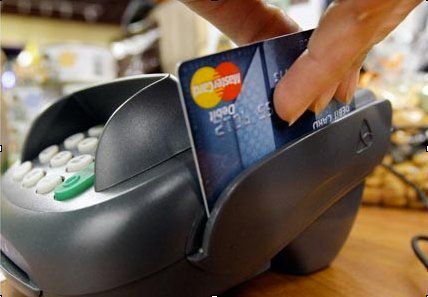
Sure, some businesses are cash-only and do just fine -- the local ice cream parlor, the greasy spoon diner down the street, the flea market that's been around for a century. But these days, in a nation where floating on credit is as American as apple pie, you've got to take plastic.
While they require some infrastructure upgrades and come with annoying fees, it has become increasingly difficult to run a full-fledged business -- especially in retail -- without accepting credit and debit cards. But despite the drawbacks, the added convenience for customers could lead to bigger purchases at the register. "You want to be accessible, and you want to broaden your opportunity to close the sale," says Greg Hammermaster, president of Sage Payment Solutions, which helps more than 140,000 businesses and organizations accept electronic payments, including credit and debit cards, electronic checks, gift cards and automatic recurring payments.
So how can you make your business credit card-friendly? Here are five things you need to know.
1. Apply for merchant status.What is merchant status? The term means you can be entrusted to allow customers to pay you with a MasterCard, Visa, American Express and the like. So why shouldn't they trust you? Well, maybe trust isn't the right word, but credit-card issuers like to see that their merchants are as creditworthy, or more so, than their credit-card users. If, say, an identity thief uses somebody's card to buy a lot of merchandise, your business is going to be on the receiving end of a chargeback -- a transaction that the bank is going to send back to you. So if the aforementioned identity thief makes off with $532 in merchandise, the bank is going to take that from your company's checking account. When you apply for merchant status, in many ways you're proving that you are financially stable. If you're not sure where to apply, your bank is a good place to start. And even if they don't offer credit cards to merchants, they can likely point you in the right direction.
2. Get your paperwork ready.Exactly what documentation you need will be spelled out on any application you fill out, but generally we're talking about references from anyone you've worked with, your financials from the last couple years (if it's a brand new business, you may have to supply your own checking account information), your business plan, possibly your resume or CV (curriculum vitae) -- just about anything you can think of is likely something the lender has thought of and will want to see.
3. Expect fees.You probably know this already. Interchange fees, also known as swipe fees, have been in the news a lot lately. In a tough economy, some business owners have voiced their objection to the high cost of interchange fees, and Congress has moved to limit how much credit-card and debit-card providers can charge. But what you may not know is that having bad credit can affect how much your interchange fees are. "Typically, you'd get 2 percent, but if you have bad credit, your interchange fee might be 2.5 percent or 3 percent of the purchase," Hammermaster says.
4. Set aside a security deposit.Because of the possibility of the aforementioned chargebacks, you'll likely have to put down a security deposit to ensure the credit-card issuer the money is there if you can't eat the costs of these nefarious charges. If you're selling furniture or computer equipment, the deposit may be pretty significant -- like $10,000 or more, suggests Hammermaster. If you're selling baby clothing or some other item that retails for a low price, you may only be looking at several hundred dollars.
5. Remember the equipment.The tools come with a price, and that price can vary quite a bit. If you really want to go cheap, there are some manual card printers -- where you have to place a phone call to the credit-card company and ask for an authorization number in order to accept the charge -- that go for as low as $22. But an electronic terminal can run anywhere from $150 to $600 and more, depending how sophisticated it is. For instance, do you want the transaction to be fast, so your customers aren't tapping their fingers? Can the printer print custom receipts with your logo and upcoming store promotions? One thing to keep in mind is that a card swipe is the final step in the customer experience, so it may not be the best place to pinch pennies. A higher upfront cost now could pay dividends in the long run.
The original version of this article appeared on AOL Small Business on 7/5/10.